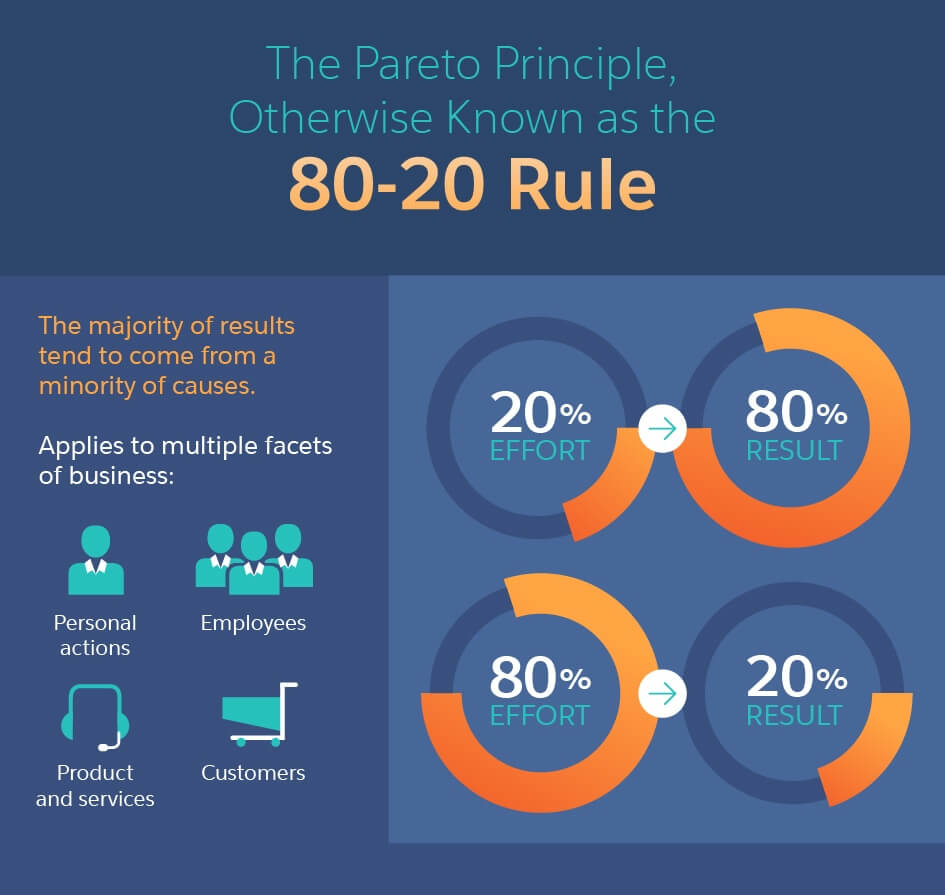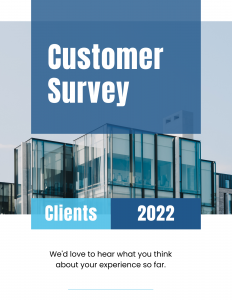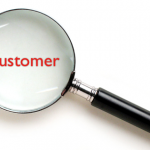I Say, “100% Running A Customer Success Program” And Here’s Why, Change My Mind…
My guess is that you probably think I’m nuts for even bothering to write about which is more important – Customer Acquisition or Customer Success/Development – because you’ve already made up your mind and “the answer is clear”. Right?
“Client Acquisition!”
No…
“Customer Success!”
No…
“It’s both, of course!”
If you read my position that Customer Success (CS) is better and said, “No way!”, I’m guessing one of two things:
- You’re in the beginning stages of your business
- Your business model doesn’t allow for repeat business from existing clients (or so you think, see FAQ at the end of this post)
If you read I support CS and said, “Heck Yeah!” you’re probably:
- Running an established business with happy customers
- Understand every business model supports repeat business from existing customers
- Maybe have even benefited from running a viable Customer Success Program
If you said, “Both”, nice work. Stay tuned as I’m going to lay out some more insights as to how if you manage a solid Customer Success Program, Client Acquisition will naturally follow. How cool is that?
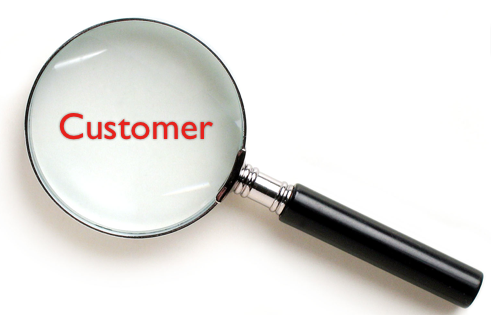
Either way, no matter what stage of the business cycle you’re in, or what your original stance was, keep reading because this article WILL be valuable even if you’re signing your first client today.
“But Thomas, how can my business focus on Customer Success if it’s new and doesn’t have any?”
That’s a valid question. In the beginning stages of any business, Client Acquisition is critical. Without it there is no business, no money, no future.
However, what this post is about, is how businesses that have as little as 10 active customers can realize faster, more consistent growth by shifting their focus from purely Client Acquisition to Customer Success.
Businesses with large emails lists can leverage this opportunity, too. Even if the folks on that list are seemingly “dead” leads. If they haven’t unsubscribed, they’re never dead. You just haven’t sent them an offer good enough yet.
Let’s dig into all this a little more to see what the real opportunity is of focusing on existing clients, rather than new ones…
The Power of Customer Success & Retention
Did you know that, on average, it’s 5-times more expensive to acquire a new customer than it is to sell to an existing one? 5-times as expensive!
In other words, for every $1 you spend fostering a relationship with an existing client, you’d have to spend $5 convincing a prospective client who doesn’t know you, doesn’t trust you, and doesn’t want to be bothered by you to pull out their credit card. That’s rough!
New clients aren’t just expensive to acquire either, they’re also less likely to spend big money with you right out of the gate. Until you earn a customer’s trust by delivering the transformation you promised, they’re dealing with buyer’s remorse, and looking to see if the refund period is still in effect.
So what can you do? Implement a proper Customer Success Program! Here are just a few of the benefits that come from that:
- Increasing customer retention by 5% can increase profits anywhere from 25-95%.
- The success rate of selling to a customer you already have is 60-70%, while the success rate of selling to a new customer is typically 5-20%.
- One customer experience agency found loyal customers are 5x as likely to repurchase, 5x as likely to forgive, 4x as likely to refer, and 7x as likely to try a new offering.
- U.S. companies lose $136.8 billion per year due to avoidable consumer switching.
- American Express found 33% of customers will consider switching companies after just one instance of poor customer service.

What does all that mean? 1) Keeping customers happy is profitable; 2) Even after getting someone to open their wallet, you have to nurture the relationship, deliver on your promises, and have an impact in their life.
In other words, ensuring a Customer’s Success is THE MOST POWERFUL WAY to guarantee your business succeeds.
Also, by focusing on your existing client base, growth can come much faster and costs a LOT less than constantly trying to bring in new, unproven customers.
Customer Acquisition “Specialist” Offers Flood The Ad-waves
As you can see from above, there is immense power and value in building a customer-centric program directly into your business’ standard operating procedures (SOPs).
Oddly enough though, from the endless stream of ads I see on Facebook, LinkedIn, Insta, etc., the demand for appointment setters, lead gen companies, and others alike has exploded in the last few years.
It’s a bloody red ocean of anyone willing to take your money on the promise of getting prospective client meetings booked on your online calendar. The sad part, from the stats above, typically only 5-20% of those “new client meetings” will convert into paying customers. What’s even worse, typically only 20% of those who convert will actually make you ongoing revenue.
Still, companies of all shapes and sizes seem to be solely focused on new Customer Acquisition and the market is happy to take their money without even having to guarantee results.
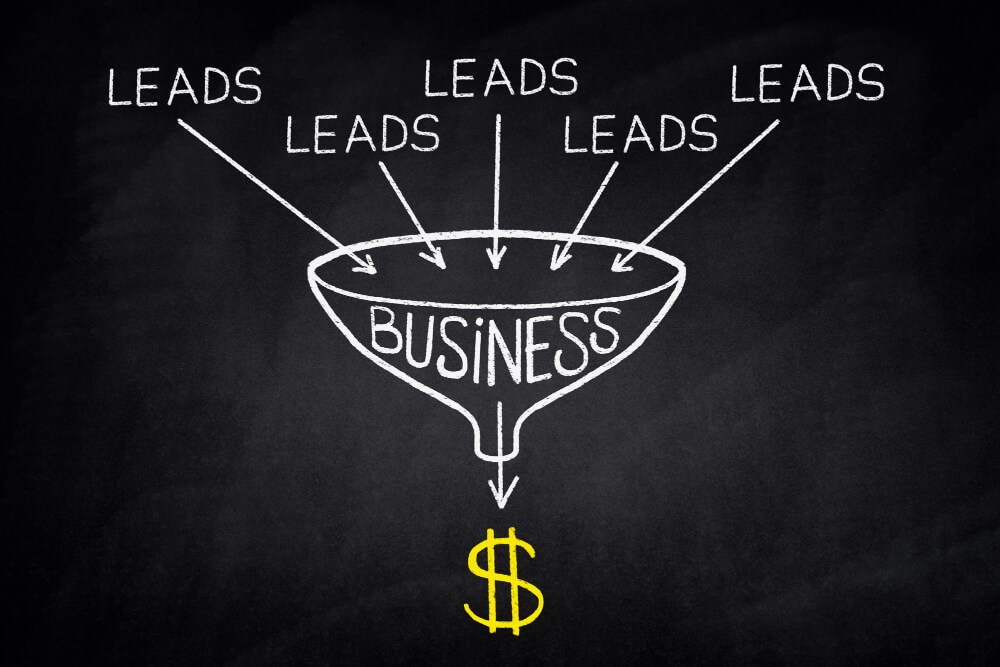
I should know, I’ve paid some of them to get nothing. Total waste of money. Such a shame. For some best practices on hiring/firing your digital marketing agency, check out this post.
I should note that I understand that the ads I see online are targeted to me based on things like search activity, likes, shares, and posts. It makes sense. I’m in the business of helping other businesses grow so why wouldn’t their algorithms want to point these hucksters my way?
That’s the dream of every business owner too, right – An endless stream of new, cheaply acquired customers lining up at their door ready to give you cash? Without that, you can’t run a sustainable business, right? Wrong.
Again, if you’re a start-up, Customer Acquisition is everything, but we’re not talking about that here.
Shifting From Customer Acquisition To Customer Success
But at what point is it time to shift from focusing on Customer Acquisition to Customer Success?
My experience says that it’s either before you fall victim to the 80/20 rule, or when you have 10 or more active clients, whichever happens first.
What’s the 80/20 rule?
In most businesses, over time, eventually 80% of your revenue will come from only 20% of your customer base. It’s one of the many business applications of the Pareto Principle, which states “The majority of results tend to come from a minority of causes.”
When the 80/20 rule comes into play regarding revenue-generating customers, it’s also a direct result of focusing purely on Customer Acquisition, rather than Customer Success.
Let’s do a little exercise…
Run a report right now to see how many of your clients are actually actively making you money month-to-month, or year-over-year?
If you’ve made it past the elusive 5-year mark in business, my guess is you’re well into the 80/20 arena. Go ahead and pause reading this and run the report on existing, active clients. Let me know if the 80/20 rule applies, or is near it and note it in the comments below.
[…Seriously, pause reading here…]
Got your number? Was it 80/20? 90/10? 40/60?
If your business has more dead accounts than active ones let me ask, why are you still servicing the bottom X% that don’t make you money?
Worse, have you ever considered the the fact that every time those bottom X% connect with someone on your staff they’re actually COSTING you money, draining the balance sheet?
What’s stopping you from dropping those clients entirely and shifting the focus to over-delivering for those in the top 20% of existing customers who really pay the bills?
If that wasn’t clear enough let me put it this way, drop the 80% dead weight, give the 20% money-makers even more of what they ask for, and your business will do better, guaranteed.
“Thomas, are you crazy?! Drop 80% of my clients and I’ll be bankrupt in hours!”
If you asked that then you’re missing the point. Maybe in your business, 69% of customers are making you money, maybe it’s 10%, or 90%. The point is, drop the dead weight and you’ll be ready for what’s next – Implementing a proper Customer Success & Referral Program.
3-Step Guide To Launching A Proper Customer Success Program
In all my years of being alive, I can’t remember ever seeing an offer that focused purely on helping successful, established businesses harness the power of their existing client base – until today!
That’s right!
Today we’re releasing a new program that was specifically designed to help your business leverage the incredible power of its existing client base, and realize massive growth, without having to shell out tens of thousands in ads, or for a sales team.
It’s called our Customer Success & Ascension Program.
This program consists of 3 easy-to-implement phases that allow you to rapidly expand your business by maximizing existing relationships. Here’s how it works…
Phase I: Mapping the Customer Journey
To best understand what it takes to turn a prospect into a raving fan of your business, it’s imperative to understand the journey customers take to go from a cold lead to part of the top 20%. In every customer journey there are also critical points every client reaches that your team MUST get right or the deal is dead.
I saw an amazing presentation by Aman Chatha, VP, Innovation & Strategic Partnerships, at “The Marketing Department” discuss this in depth where he called these critical points, “moments of truth” in the Customer Journey. I’m going to call them MOTs for short.

Identifying, tracking, and optimizing these MOTs is imperative to running an effective Customer Success Program. Keep in mind, MOTs also occur at all stages of the journey – Sales, Onboarding, Support, Retention, & Development.
What are some examples of MOTs? For instance, I work with a large payment SaaS platform that has multiple MOTs during each stage of their customer journey. Here are just a few examples:
Sales: That the clients’ organization will never have to pay credit card processing fees again. This is the main selling point of their system and this needs to be delivered upon from day one.
Onboarding: That the client’s account will be approved and set up quickly and with ease for the customer. Miss these goals and the sale is (obviously) dead.
Support: Helping with things like payment refunds, adding/editing features as the business’ needs change, and being genuinely helpful when meeting the customer’s wants by delivering what they actually need (they’re not always the same thing).
Retention: Annual account reviews to ensure the client is getting the most from their time with the platform, and interactions that show the company cares about them and not just the revenue they generate.
Development: Giving customers a proper success pathway, a platform to air and solve grievances, and tools to foster engagement and incentivize referrals.
Screw up any of these elements and the client will head to the next payment platform. It’s that simple. Get these MOTs right though and these customers will sing their praises forever more! Why? Because the customer succeeded in getting what they wanted (and needed).
How do you know what your “Moments of Truth” are?
The best way to uncover your MOTs is interviewing all staff, the top 20% of customers, and even some of the folks who weren’t able to consume your product/service.
Your staff and happy customers will be glad you want their input in the process. I’d also strongly suggest making these interviews anonymous using an online form like JotForm or SurveyMonkey. This will help ensure people can give their honest insights, without risking their paycheck.

Interviewing staff will also allow you to better understand what every employee thinks their roll is in the company. The answers may surprise you.
Interviewing angry customers who couldn’t buy-in will also tell you exactly what went wrong and what to take seriously. Negative feedback is amazing because it can reveal the exact parts of the customer journey that may need to be fixed, enhanced, automated, or even eliminated.
Wondering what questions to ask staff, happy, and angry customers? Stay tuned as I’m going to give you an incredible cheat sheet for building your own Customer Success Program at the end of this article. Don’t skip ahead though, as there’s still 2 incredible phases to cover.
Phase II: Customer Surveys
My oh my! This is seriously my favorite part. Why are surveys my favorite? Because they can tell you EVERYTHING you need to know about how to run and grow your business.
Want to create a new offer that’s guaranteed to increase revenue? Ask your customers what they want to buy from you next, build exactly that, then sell it to them. They won’t just pay, but thank you for taking their money.
Wondering how to create your next marketing campaign that’ll actually work? Ask your customers what they love about their experience with you so far and regurgitate that on ever brochure, banner, ad, etc.
Wondering how to acquire new customers? Ask existing customers if they’d recommend you to others. When they say yes, ask them to record a brief video on their phone singing your praises and post it to their social media accounts for a $25 gift card. (Oops, did we just reveal a cheaper solution to Customer Acquisition?)
Wondering how to acquire even more customers on a regular basis? Incentivize your clients in ways they will want to sell for you over and over again. Most companies now call these affiliate programs, and I’ve seen them grow companies exponentially.
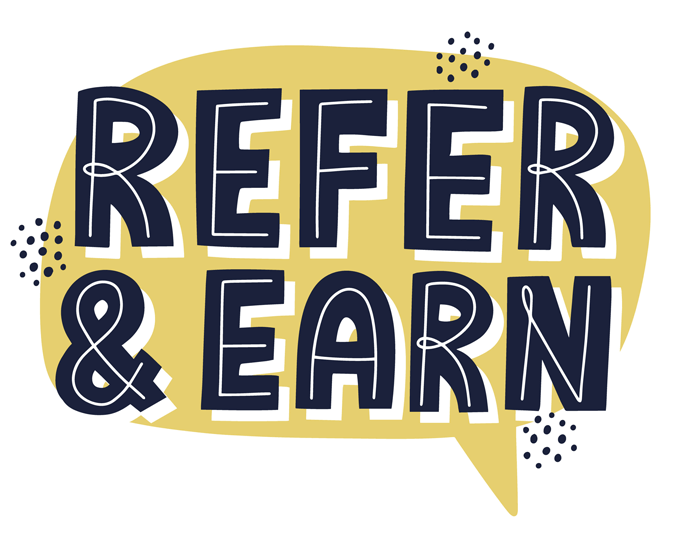
Think about it this way, if you have a sales team on staff that’s taking either a salary, a percentage of everything they bring in, or both, how much does that cost at the end of the day? In other words, what’s your actual cost per acquisition (CPA) for a new customer?
If you’re running an expensive ad campaign, how much does it cost in ad spend, staff time, etc. to acquire a new customer? Cut that amount in half, use it to incentivize existing clients to bring in new ones, and watch your revenue double almost overnight. You’re welcome.
Wondering what questions to ask on the customer survey? It’s actually just 4 simple questions, but how you release the survey can have a big impact on response rates. Here are the 4 questions and the insights they’ll provide to your business…
What do you like most about [insert your offer here]?
This reveals why these customers bought in and what to say in your new marketing materials to attract more of the same top 20% revenue-generators.
What areas do you think we could improve on?
This will reveal some more “moments of truth” that need addressing, and other areas of your business that need to be enhanced, automated, or eliminated. Don’t take these answers lightly either. Act upon every one possible.
What other products and services do you wish we offered now or in the future?
Ahem, want to make more money tomorrow? Do EXACTLY what your customers say here and it’ll be the easiest check you’ll ever cash.
Would you recommend us to a friend or colleague?
[Clears throat again] Seriously, it doesn’t get any easier than this to acquire NEW customers. When someone says yes to this, either ask them to schedule a call with your Customer Success team to gather names and emails, or route them to an online form where they can put in their own names and emails.
Then send those referred folks a personalized email with an offer to opt-into that references who referred them and why.
You can also ask anyone willing to recommend you to record a brief video testimonial on their phone that can be repurposed in so many ways on social media, YouTube, etc.
Download this handy PDF to send customers right now and see what their thoughts on what you’re doing right, wrong, should sell them next, and who your new customers should be…
Phase III: Leveraging Client Referrals To Get Consistent, New Customers In The Door
Building on the last idea of having customers help refer others, this final phase relies on incentivizing happy clients to bring in new business.
Think about how powerful this is. For every 10 customers you have, if you can get just 2 of them to refer 1 new client each, that will grow your business by 20% instantly. Better yet, those 2 new clients have already been indoctrinated into your business because they were referred by a friend/colleague, rather than a salesman.
Personal reviews can make or break a company, and the same goes for your business. People talk. The average happy customer will tell 3 others about their experience. The average angry customers will tell 122.
How many times have you gone to Amazon, read the “Product Description”, then immediately scrolled to the customer reviews, and bought or didn’t buy based on the reviews alone? Maybe you’ve even just seen that a product has 22,897 reviews and a 4.8/5 rating and then bought without reading reviews? I have. LOL!
Adding site reviews was even the Tipping Point for Amazon, which we covered in another post, and we all know how big they’ve gotten.
We’re now going to leverage that exact same strategy to consistently bring in new customers for your business. Customers who are even happy to give you $$. Why? Because they drank the Kool-Aid and were convinced by a friend/colleague, rather than got sold by a salesman. See the difference?
How do you get existing customers to “sell” for you? Simple. Incentivize them ($$) and make it easy to refer…
Thomas Buttino
Step 1: Incentivizing Clients To Refer Others
Incentives can come in many forms, but it’s important they follow 3 simple rules:
- Take into account the Lifetime Value (LTV) of a typical customer (how much each makes you on average), and not exceed 30% of that amount
- Properly compensate the person referring you this new business once the deal is closed and paid. (Good to note that your CPA is now 1/5th of what it was when acquiring new customers the old fashioned way.)
- Fit both your audience and particular business model
How do you properly incentivize anyone to sell on your behalf? Some options that will help entice existing customers to send multiple referrals your way include:
- Buy One Get One (BOGO) offers
- Discounts on future purchases
- Rebate for a recent purchase
- Gift cards
- Revenue-share
- Swag (t-shirt, hats, other goodies)
- Quid pro quo (doing something for them in return)
- Content for their blog, podcast, YouTube channel, etc.
- Exclusive access to other areas of your product/service
- Rewards
- Cash (is still king)
- Notoriety: propping them up in your marketing material to increase their exposure
- Awards
- Gamify the process by rewarding the top referring person with something like a brand new Ferrari (yes, that’s a thing companies “in the know” actually do)
Again, the particular incentives you give folks to refer business will ultimately depend on your business model, profit margins, and the lifetime value of a new customer.
My advice though, don’t cheap out in incentivizing ANYONE to refer business your way!
Sending someone a $5 t-shirt and a $25 gift card is incredibly inexpensive, especially if the lifetime value of a new customer is in the hundreds or even thousands of $$’s. Plus, the folks these existing customers bring in are typically going to be even more profitable from the start. Why? Because they’ve already drank the Kool-Aid and didn’t just get sold a bill of goods.
Step 2: Make It Simple To Refer
There are a number of ways to make it easy for customers to provide referral videos, emails, testimonials, reviews, etc. Again, which one is best for your business will come down to your business model, and where more of your ideal customers are hanging out online.
For example, local area businesses like chiropractors, contractors, and healthcare specialists should leverage FREE services like Google reviews. When people are searching online for services the first thing they type in the search bar is “[professionals] near me”. The companies with the most Google reviews are going to appear first, and customers will decide if they want to work with you based on them.
There are a number of other services you can access to collect and manage reviews, too:
- Google reviews
- TrustPilot
- Amazon
- Bing reviews
- TikTok
- and over 190,000,000 others from this Google search for “reputation management systems“
The point is, find the one that’s right for your business and brand and ask customers for a review at every single “Moment of Truth” uncovered in the survey above. When your team nails these MOTs, customers will sing your praises, and the reviews will deliver consistent, organic growth to your customer base and bottom line.
Step 3: Implement, Analyze, Optimize
Now that you have the means to start building a viable Customer Success Program (CSP), the next step is to implement it, analyze the results, and optimize the Customer Experience (CX) based on what you find.
Continually enhancing your CSP is the only way to effectively realize the amazing results possible with a proper CSP. Not to worry though, you just shaved 80% of your dead weight clients off the books, so you and your team now have plenty of free time to focus on helping existing clients do better and refer new clients with bellies full of your Kool-Aid.
What To Do Next…
…grab our FREE, pre-built customer and staff surveys for your own JotForm account now. Simply log in to JotForm, click “Create Form”, then use the “Import” feature and copy the URLs below in when asked, click create, and then update your company logo and name.
It’s that easy to get started. Here’s a quick video to show you how to import the form into your JotForm account…
Happy Customer Survey:
https://form.jotform.com/222507324204040
Staff Survey:
https://form.jotform.com/Buttino/staff-journey-survey
Angry Customer Survey:
https://form.jotform.com/222508065494155
Want Help Setting Up Your CSP, Or One Done-for-You?
Looking for someone to take care of this for you? Fill out the brief questionnaire below and tell us a little more about your business, where you’re at in the CSP building process, and we’ll help you get a custom CSP running quickly.
Talk soon!
Sincerely,
Thomas Buttino – Major Customer Success Advocate
Frequently Asked Questions
– Answering The Most Pressing Questions About Running A CSP –
My Business Model Doesn’t Support Repeat Business. How Can I Upsell Customers?
Ok, this is the easiest way to answer that – your customers will really only stop buying from you under 3 conditions:
- You destroy the relationship with bad customer experience
- You stop providing them real-world value
- You stop selling them new stuff
Seriously, that’s it. Let’s focus on the 3rd bullet though, that folks will stop buying from you if you stop selling them something.
Imagine you run a house painting business and someone has entrusted you with $5,000-$20,000 of their hard earned money to make their house look nice for the next 20 years. That’s a HUGE nut to crack with homeowners, but you’ve done it, the sale is made and your crew is hard at work.
5 days later though the crew is done, they pack up their equipment, and it’s off to the next house, only to hope the customer calls again 20 years from now for another painting. Right?
But wait?! That same homeowner still has landscaping that needs tending to every month, pest control to keep the bugs out, an irrigation system that needs new underground hoses, windows that need to be cleaned every quarter, a driveway that needs power washing, a small roof leak needs to be patched.
If you’ve ever owned a home you know the list is endless and those are just their needs outside the house. What about inside? If you’re running a home painting company and not offering other ways to service the outside of the home you’re missing a MASSIVE opportunity to infinitely scale your business from now on.
But we don’t have the capacity to offer other services to clients right now. What do we do then?
That’s totally fine! If your company can’t fulfill on a customer’s other needs then find another company to partner with that can and start referring them new business for a finder’s fee. Typically that’d be 5-20% of the sale.
You’ll eventually notice the 80/20 rule creep back in here, too, as 80% of your customers will choose 20% of the upsells they’re offered. Once this happens, start planning how to bring those most-liked services in-house and earn 100% of the sale, rather than just 5-20%. In business school they call this “Vertical Integration“. In the real world we call it making more money the smart way.
The point is, no matter what industry you’re in, once you solve one issue for a customer, seven more will “magically” appear. It’s like when you vacuum that one spot on the floor that’s been bugging you, then all of a sudden 3 more pop up and you have to get them all. It’s up to you to spot these opportunities and unlock ways to capitalize on them.
Wondering what to sell your customer next? Ask them in the survey above!
Won’t Setting Up A CSP Take Up Too Much Time For Me, My Staff?
Not at all. That’s why we designed our Done-for-You Customer Success Program.
Having only 10 active clients doesn’t seem like enough?
True, 10 active clients is not a lot but the sooner you start the program, the sooner it will start working. Honestly, that starts with Day 1 of your business, and never end.
At the very least, start today by mapping the customer journey and start thinking about what questions you’d like to ask customers at each of the MOTs you uncover.
Why would we ever abandon our current Customer Acquisition efforts? That’s silly.
Of course you wouldn’t do that on day 1. We never suggested stopping your current Customer Acquisition efforts either. Instead, as you grow the CSP and reach Phase III, the CA end of your business will eventually take on a life of its own, and running expensive outbound campaigns will not be as vital.
We’ve never run a rewards program. Where do we start?
Run the survey linked above and let your customers tell you exactly what they would want in a rewards program, then deliver on the most requested plan.
Asking for referrals has always seemed sleazy to me. How do we ensure it doesn’t come across that way?
Remember, the only time you’ll be asking for a referral is after you’ve either met or exceeded the customer’s expectations during a MOT, or you’ve delivered on a promise and the customer is happy.
At either point, the customer is primed to want to share their experience, and will be glad you asked for their feedback and approved it to be released.
Be proactive in seeing customers succeed and they’ll gladly return the favor.
Thomas Buttino
We’re already working with an agency. Can they do this for us?
Sure, but if they were going to do it, they probably would’ve by now. Send them this article and see what’s possible, or not. We’re also happy to work with your agency to get our Done-for-You CSP running for you.
We can’t pay our customers for referrals because of industry regulations. How do we get around that?
Totally understandable. There’s always ways to reward customers without risking regulatory infractions. To get started, consult with industry legal analysts and see where there are opportunities to properly incentivize folks in your niche, without risking your business as a whole. I can assure you, someone in the industry is running a successful campaign that incentivizes organic growth. It’s just up to you to find them and model what’s working, or give us a call to help out.
Contact us now for more FAQs and insights:
support@theautomatedexec.com

